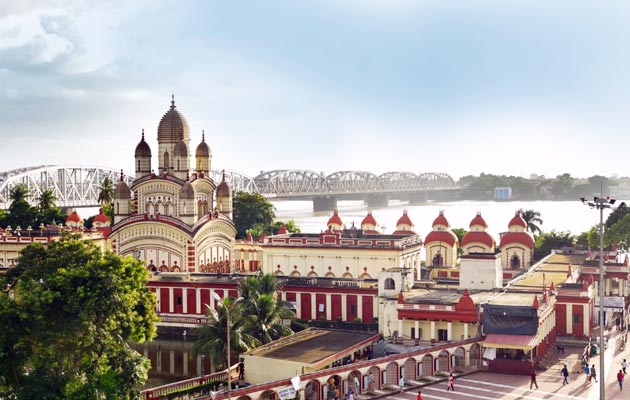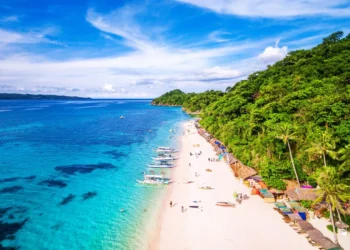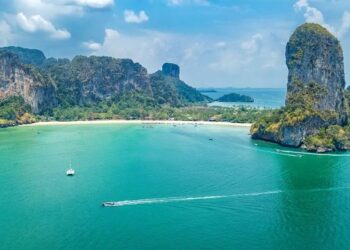In the very heart of Kolkata, on the eastern bank of the Hooghly River, West Bengal, lies Dakshineswar Kali Temple, a sacred shrine of worship dedicated to Goddess Bhavatarini, worshipped as a fierce yet benevolent form of Mahadevi or Parashakti Adya Kali, otherwise known as Adishakti Kalika. Famed for its nine-spired Navaratna architecture and its spiritual link to mystic Ramakrishna Paramahamsa, the temple was built in 1855 by Rani Rashmoni.
Interesting Fact: The temple’s 4-foot black stone Kali idol, standing on Shiva’s chest, is revered as a living deity, with the divine avatar Ramakrishna Paramahamsa’s daily worship here sparking a spiritual revival in 19th-century Bengal.
Overview of Dakshineswar Kali Temple
Dakshineswar Kali Temple, in Kolkata’s Dakshineswar area, is a key Hindu pilgrimage site for Shaktism, blending Bengali devotion with Vedic traditions. Known for its 4-foot Bhavatarini idol, the 20-acre complex includes twelve Shiva shrines, a Radha-Krishna temple, and a bathing ghat. Devotees offer vermilion, hibiscus, and sweets, believing Kali grants protection and moksha. Managed by a trust since 1855, it hosts thousands during festivals. A sacred hub, it shines in Bengal’s spiritual landscape, tied to the Hooghly’s sacred flow.
History of Dakshineswar Kali Temple
In 1847, Rashmoni prepared to go upon a long pilgrimage to the sacred Hindu city of Kashi (known also as Varanasi or Benares) with a large entourage aboard 24 boats filled with family, attendants, and supplies to express her devotions to the Divine Mother. According to various accounts, the night before the pilgrimage began, Rashmoni had a vision of the Divine Mother goddess Kali in a dream. In the dream, the goddess Kali appeared to Rani Rashmoni and told her there was no need to go all the way to Banaras. Instead, the goddess instructed her to build a temple by the Ganges and enshrine her image there — promising to manifest within the idol and accept worship directly at that sacred spot.
Deeply moved, Rani Rashmoni changed her plans. She bought a sizable piece of land — roughly 20 acres — in the village of Dakshineswar from a British owner named Jake Hastie. This land was once known as Saheban Bagicha and had geographical features ideal for Tantric worship, particularly its resemblance to a tortoise shape, which is considered auspicious in Shakta traditions. Construction began shortly after and spanned about eight years, costing nearly 9 lakh rupees — a considerable sum at the time.
During the sacred occasion of Snana Yatra, on 31 May 1855, the temple was officially inaugurated with the installation of the idol of Goddess Kali, who was known as Sri Sri Jagadishwari Mahakali, amid grand festivities. It was a grand event, with over 100,000 Brahmins invited from across India. The temple’s first head priest was Ramkumar Chhattopadhyay, who was later succeeded by his younger brother Gadadhar, known to the world as Sri Ramakrishna, following Ramkumar’s death in 1856. Ramakrishna’s wife, Sarada Devi, also resided on the temple grounds, staying in a modest room at the base of the Nahabat (the music tower), a space now dedicated to her memory. Rani Rashmoni lived for only five years and nine months after the inauguration of the temple just one day after ensuring the temple’s future by transferring her Dinajpur property (now in Bangladesh) to the temple trust to fund its upkeep.
It was under Sri Ramakrishna’s spiritual presence that the temple gained widespread recognition. Ramakrishna was responsible for bringing much in the way of both fame and pilgrims to the temple because of his simple yet profound teachings and deep devotion to the Divine Mother attracting countless devotees, including Naren Dutta, who would later become Swami Vivekananda. The wisdom and insights shared by Ramakrishna during this time were recorded by his disciple Mahendranath Gupta in the famous work Sri Sri Ramakrishna Kathamrita, known in English as The Gospel of Sri Ramakrishna, published between 1902 and 1932. This text has since become a spiritual guide for seekers around the world.
Architecture of Dakshineswar Kali Temple
Dakshineswar Kali Temple, set on a 20-acre plot by the Hooghly, follows a Navaratna style with nine spires and a 100-foot central tower topped by a golden kalash. The main shrine, 15 meters by 15 meters, built of white marble and sandstone, houses a 4-foot Bhavatarini idol. Twelve Shiva shrines, each 3 meters by 3 meters, encircle it, each with a 2-foot linga. A Radha-Krishna temple, 10 meters by 8 meters, stands south. A ghat, 50 meters long, touches the river. The entrance, a 6-meter-wide arch with floral motifs, leads to a tiled yard, 3000 square meters, holding thousands.
Information for Travelers
How to Reach Dakshineswar Kali Temple, Kolkata
In Dakshineswar, 13 km from Kolkata’s center, the temple is reached by metro, taxi, or bus, set by the Hooghly River.
By Air
Netaji Subhas Chandra Bose Airport, Kolkata, 13 km away, connects to Delhi (2 hours), Mumbai (2.5 hours), Bangalore (2.5 hours). Taxis take 30 minutes.
By Train
Dakshineswar Railway Station, 1 km away, links to Howrah (15 minutes), Kolkata (20 minutes). Autos or taxis take 5 minutes.
By Road
Dakshineswar connects to Kolkata (13 km, 30 minutes), Howrah (10 km, 25 minutes), Sealdah (15 km, 35 minutes) via NH-12.
Hours and Entry
Open daily, 6:00 AM–12:30 PM, 3:00 PM–8:30 PM. Free entry while puja costs ₹50–300. No photography in the sanctum. Wear clothing covering shoulders and knees; women wear sarees or suits, men wear kurtas or dhotis. Nearby stalls sell offerings.
Best Time to Visit
October to March, temperatures 14–25°C, suits visits. Kali Puja (November) and Durga Puja (October) draw huge crowds; visit at dawn. Avoid April–June, 25–40°C, or monsoons for crowded ghats.
Nearby Attractions
Belur Math, 2 km across the Hooghly, Ramakrishna Mission’s serene headquarters.
Adyapeath Temple, 1 km, honors Annapurna with a 5-foot idol.
Kali Ghat, 12 km, a historic bathing spot on the Hooghly.
Victoria Memorial, 15 km, marble museum with colonial history.
Howrah Bridge, 10 km, iconic steel structure over the river.











